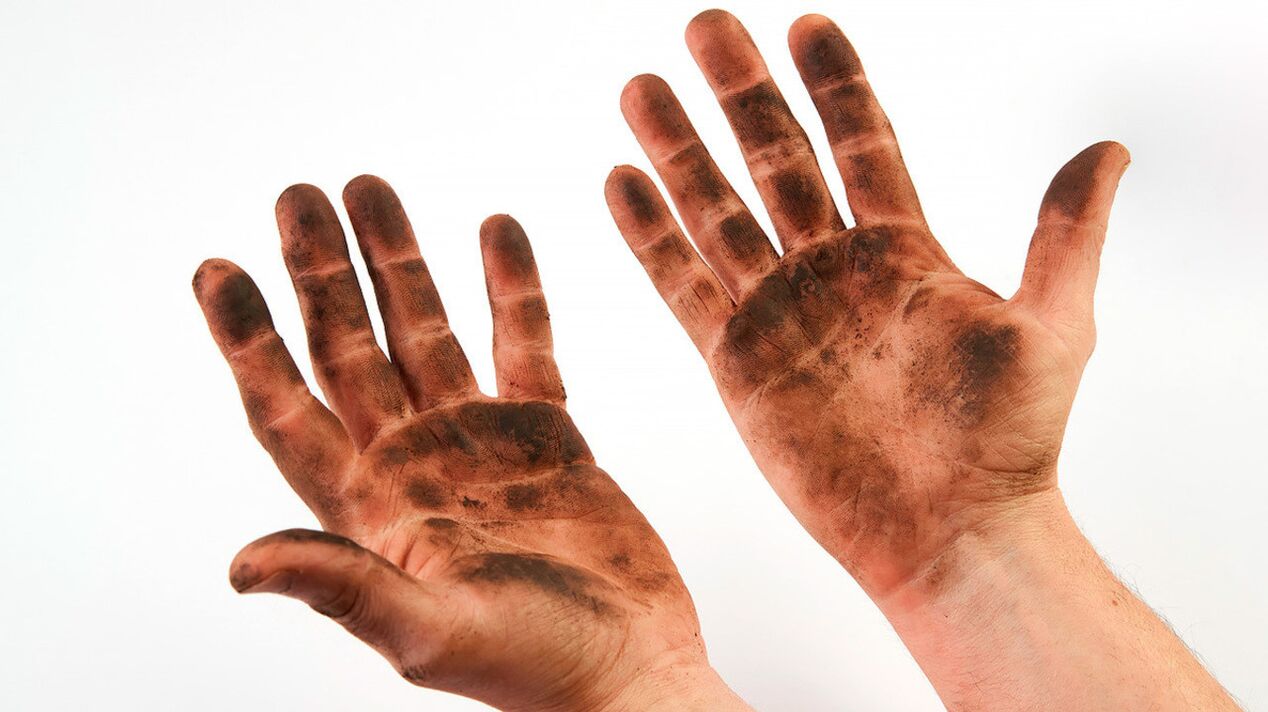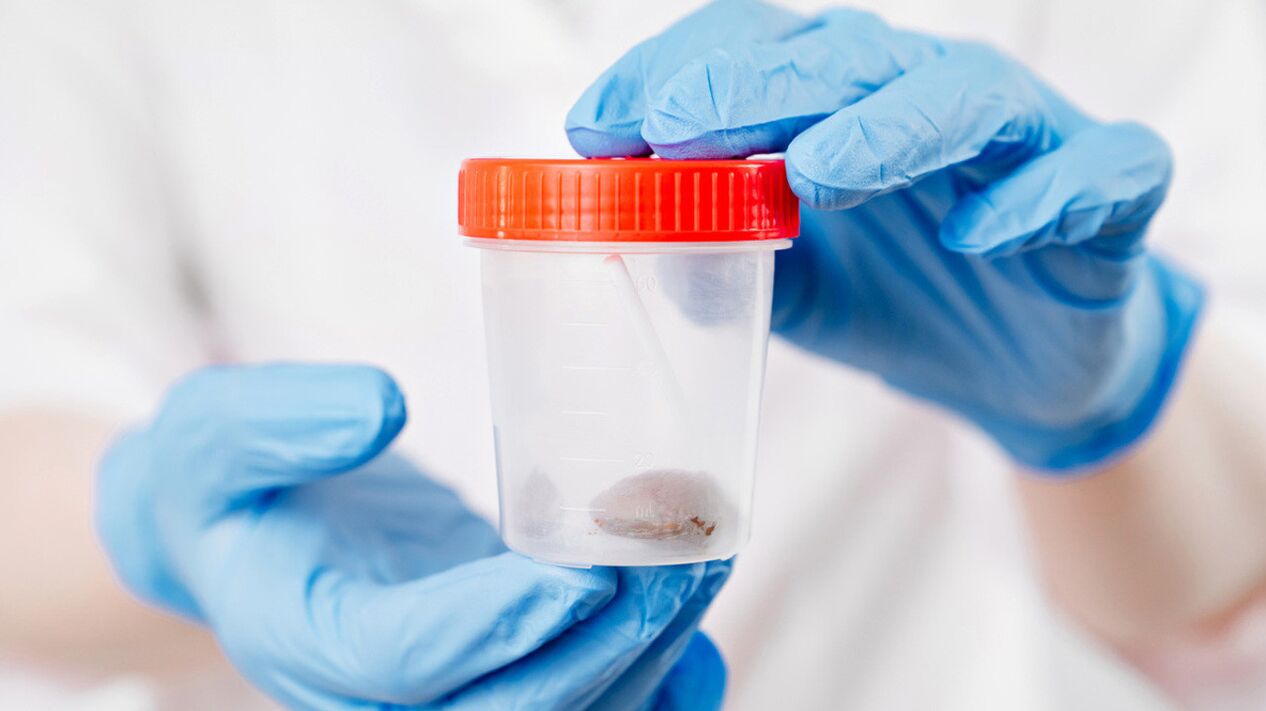%20in%20doctor's%20hand.jpg)
Worms are worms that live in humans and animals. They pretend to be many other diseases and conditions, so they are difficult to detect. Symptoms of worm infection range from mild discomfort to severe poisoning and fainting. We will tell you where you can get worms and how to remove them.
What is it
Worms are considered to be the most common parasites in humans. Today, science knows about 300 worm diseases. The most common are intestinal helminthiases-ascariasis and ascariasis, which affect more than 2 billion people.
The size of the worms living in the body varies from a few millimeters to a few meters. For example, the length of the pinworm that causes pinworm disease does not exceed 1 cm, and some tapeworms (such as tapeworms) can reach 12-15 meters.
Causes of helminthiasis
Helminthiasis is a disease that infects worms. The worm enters the human body and stays there. These parasites not only live in the intestines, but also in other organs and tissues.
According to the World Health Organization, one in four people on the planet is infected with a worm. At the same time, WHO experts pointed out that the actual number of infections is at least 50%. This mainly involves countries with low hygiene culture (these are some countries in Africa and Southeast Asia). In other countries, more than 1. 5 million worm infections are recorded each year. Most of them are children.
How can you get a worm?
There are 4 ways of infection:
- Through the soil. This type of disease is called ground helminthiasis. Unwashed fruits may contain tens of thousands of parasites. Therefore, it is very important to thoroughly wash vegetables, fruits and hands before eating. Walking pets are another source of ground parasites.
- After contact with an infected person. The number of parasitic worms is staggering. In just one day, female pinworms can lay as many as 5, 000 eggs in the human body. Eggs and adults can spread to other people through bedding and other household items. After that, it is enough for the infected person not to wash their hands, and the worms will penetrate inside.
- When eating contaminated food. This kind of helminth disease is called biological helminthiasis. If the heat treatment of meat, poultry or fish is not adequate, you may be infected with parasites.
- Through insect bites. This type of transmission is rare. Usually, very small parasites can be spread through insect bites.
Consider the risk factors that increase the likelihood of worms in adults and children:
- Ignore hygiene rules-if you don't wash your hands before going to the street, toilet or eating.
- Nail biting habit-there is a lot of dirt with microorganisms and parasites under them. This also includes the habit of putting pens, pencils and other items in your mouth.
- Poor pet care, especially for those who are out.
- Eat unwashed vegetables and fruits.
- Use water from a suspicious source.
- The living area is not cleaned.
- Passion for animal food without proper cooking and processing.
Who is at risk

No one is immune from infection with worms. It is enough to relax on hygiene issues, and the larvae of the parasite can "break through" and enter the body. The following types of people are particularly susceptible to helminthiasis:
- child. In most cases, worm invasion occurs in children. This is because the child ignores the hygiene rules. Children put things in their mouths, and they often dig in the street. In groups, children are often in closer contact with adults than adults, which also increases the possibility of infection.
- Family with pets. Parasite eggs and larvae can be seen everywhere with pets entering the living area from the street. Usually, the owners of dogs, cats and other animals are not even aware of this problem, but only discover the presence of worms when they contact the veterinarian for other reasons.
- Foodie. Lovers of exotic cuisines such as sushi, raw meat or fish are also at risk.
- Traveler. This is especially true for people traveling to countries with low hygiene.
- Summer residents, agricultural workers. People who work in vegetable gardens, orchards, or just live in the country.
- People who encounter raw fish or raw meat at work. For example, suppliers or chefs-when processing, cutting and preparing food.
Misunderstanding 1: There are no parasites in marine fish.
Many people mistakenly believe that worms only exist in river fish, because the seawater is salty, so they are not in the sea. In fact, marine fish are mainly affected by parasites that are harmless to humans. In this regard, raw river fish are more dangerous than raw sea fish. But this does not mean that sea fish is completely safe: it is always recommended to process any fish-thoroughly fried, boiled or frozen for 3 days.
Classification of helminthiasis
There are several classifications of parasitic worms. By positioning, the worm is:
- Intestine-lives in the small or large intestine. These include roundworms, eels, whipworms, and cattle tapeworms.
- Lung-lives in the tissues of the bronchopulmonary system. The most common is lung fluke.
- Tissues-parasites on various tissues of the body. Tissue worms include Schistosoma, Trichinella, and Toxoplasma.
- Parasites of the liver and gallbladder. They are liver fluke, liver giant fluke and clonorch (Chinese fluke).
According to different pathogens, helminthiasis can be divided into 4 categories:
- Nematodes-caused by roundworms. These are ascariasis, ascariasis, trichinosis, trichomoniasis, toxoplasmosis, hookworm disease, etc.
- Cestodoses-The causative agent is tapeworms. Such pathologies include hymen dermatitis, tapeworm disease, tapeworm disease, bilobal filariasis, and cysticercosis.
- Dystomyases are diseases caused by flatworms. These are Fascioliasis, posterior flagellosis, and biciliosis.
- Protozoa-The pathogen is a protozoa, such as Lamlia, Toxoplasma gondii or Amoeba.
There are more than 70 kinds of parasitic worms. The most common are the following worm diseases (see table).
| disease | Pathogen and its characteristics | Transfer method |
|---|---|---|
| Ascariasis | It is called roundworm. These are roundworms that live in the intestine. They can grow to 30-40 cm. Roundworms feed on almost all the nutrients in the food. In the course of life activities, worms damage the intestinal wall until perforation | In most cases, roundworm eggs are transmitted through the fecal-oral route. They exist for a long time on the surface of soil and vegetables, fruits, herbs and berries |
| Enterobiasis | It develops when the pinworm enters the body. These are small round worms with a size of 0. 5-1 cm. The main danger of pinworm disease is the toxic waste of worms | Contact with an infected person. Pinworm eggs will stay on various surfaces for a period of time. |
| Giardiasis | Caused by microscopic parasites-Lamlia. Pathogens produce toxic substances and damage tissues | Giardia is spread through the fecal-oral route and contaminated food and water |
| Posterior testicular disease | The pathogen is a small worm with a maximum of 2 cm. They usually live in the liver and bile ducts. For posterior testicular disease, poisoning of toxic substances and mechanical damage to tissues occur | Opisthorchiasis pathogen is spread through raw fish |
| Hydatid disease | It is caused by Echinococcus, and the tapeworm is no more than 5 cm in size. Echinococcus parasites various tissues, including the heart and brain. Pathogens can cause serious interference with the function of organs and body systems. In some cases, they can trigger the malignant tumor process. | They are spread through dirty hands and contaminated food. Carriers of Echinococcus can also be dogs and rodents. |
| Biloba filariasis | Pathogen-large tapeworm, up to 10-15 meters. Tapeworms live in the small intestine and cause serious damage to the host's body. Worms produce toxic substances and significantly impair the function of the digestive tract | Eating raw fish can be contagious |
| Trichotillomania | Whipworms are called whipworms, a round worm that looks like hair. Vlasoglava can reach 5-6 meters. Worms live in the intestine and penetrate into the submucosa. Cause poisoning, inflammation and acute anemia | The invasion is carried out by swallowing the eggs of the parasite |
Worm infections are also classified according to stage:
- Acute helminthiasis-appears 2-4 weeks after infection. In this case, the symptoms of the worm will be observed within 1 week to several months. Without treatment, the disease will become chronic.
- Chronic helminthiasis-the manifestation depends on the type of parasite. For example, if these are parasites reproduced by larvae, then prolonged allergic reactions will follow. Other chronic helminthiases may be asymptomatic or accompanied by pain, discomfort, fatigue, and other symptoms.
Complications of helminthiasis
If helminthiasis is not treated, it can lead to serious complications, sometimes even life-threatening:
- Anemia-Anemia is an insufficient number of red blood cells and hemoglobin in the blood. This situation is due to the worms consuming some of the nutrients needed for normal hematopoietic function.
- Destruction of tissues and organs. Worms not only live in the lumen of the gastrointestinal tract, but also live in the thickness of tissues such as liver, lungs, and muscles. Most importantly, when the worm moves from one department (or organ) to another department (or organ), the tissues are affected during the worm's migration-forming ulcers and persistent inflammation of the lesions. In this context, the risk of infection and malignancy increases.
- Nervous system disease. This is because the toxic waste of worms can poison the body. Nerve tissue is most sensitive to toxins. This can cause irritability, headaches, insomnia and other signs of nervous system damage.
- Allergic reaction. Toxic substances secreted by worms can also act as allergens. Human immunity may not respond adequately to these substances. This can lead to typical allergy symptoms-rash, redness, itching, and sometimes nausea and vomiting.

The presence of worms in the body can also cause deficiencies in the following minerals:
- Zinc. Lack of zinc, weakened immunity, easy to catch colds, and other infectious diseases. The possibility of suffering from prostatitis and infertility increases, because this trace element is extremely important for the health of the reproductive system.
- selenium. Decreasing immunity also increases the risk of malignant tumors.
- iodine. Iodine deficiency in children can cause growth retardation (physical and mental). In adults, thyroid function worsens and metabolic processes slow down.
- manganese. Without manganese, bones will become brittle. A person loses weight quickly, he is often troubled by cramps and dermatitis.
- chromium. Lack of this element can cause developmental delay and impaired carbohydrate metabolism.
Worms and immunity
Usually, worms are accompanied by other parasites-Toxoplasma and Chlamydia. This is due to suppression of immunity. A healthy body can resist invaders, but helminthiasis weakens protection. Toxoplasmosis is especially dangerous during pregnancy because it can cause the death of the fetus.
Symptoms of helminthiasis
The signs of worms are different in adults and children. The most common symptoms are:
- Anal itching is the most common symptom of intestinal worms;
- Dreaming of teeth grinding-caused by toxins released by worms;
- Drooling during sleep and morning;
- Nausea when brushing your teeth in the morning;
- Peeling skin on hands and feet;
- Allergic rash;
- Intense hunger, until fainting;
- Swelling (usually allergies);
- Itchy skin;
- Chronic fatigue;
- Headache and dizziness;
- Unexplained mental disorders (stress, neurosis, depression);
- Bloating;
- Symptoms of intestinal diseases;
- Weight changes (overweight and wasting);
- Simultaneous course of several diseases (or inheritance of one disease to another);
- Abdominal cramps or pain;
- anemia;
- Children's physical and mental retardation;
- Naive hyperactivity or lethargy;
- Swollen lymph nodes (usually in the acute phase of helminthiasis).
When to see the doctor
The therapist or infectious disease specialist is responsible for the treatment of parasitic diseases. If you find one or more of the above symptoms, you should consult a doctor. Since the system of masking worms is quite complicated, you should explain the symptoms to your doctor as accurately as possible and talk about your lifestyle: what food do you like, whether you have traveled recently, where you have been, whether there are pets, etc.
Disease diagnosis

If the doctor suspects a worm intrusion, it is not difficult to identify it. To do this, use the following diagnostic procedures:
- Stool examination. The stool sample was handed over to the laboratory. They may contain eggs or larvae of parasites that live in the intestines.
- Scrape the heat rash. Use a cotton swab to remove the swab from the anus. Through this analysis, pinworms can be identified. Gua Sha should be done in the morning before going to the toilet.
- Blood tests for antibodies. This is a very useful test, you can use it to identify many parasites. However, even with a positive result, there is no guarantee that the parasites are still present in the patient's body, because the antibodies are still there even after they are eliminated.
- Instrument diagnosis. Use X-rays, MRI and CT, and use contrast agents. These diagnostic methods can identify some pathological changes in tissues caused by large worms and worm invasion.
Usually, doctors will prescribe different studies to improve the reliability of the data obtained. Sometimes it is necessary to perform multiple tests on the patient to make an accurate diagnosis.
important!When worm disease is confirmed, it is necessary to notify other close family members. It is also recommended to check for them. If the test result is positive, it is important that all infected family members must receive treatment. Otherwise, the eggs of the parasite will re-enter the body of the recovered person, and everything must start from the beginning.
Treatment of worms in children and adults
Although there are a lot of antiparasitic drugs in the pharmacy, you cannot take them by yourself. The doctor prescribes a comprehensive treatment plan that not only removes the parasites, but also eliminates the consequences of their life activities.
Usually, in addition to anthelmintics, vitamins and other drugs to eliminate symptoms of the disease are prescribed to patients. The doctor chooses the medicine for each patient individually, because each person has different symptoms.
Drugs for treating helminthiasis
Following the invasion of the worm, the patient was prescribed a combination of the following drugs:
- Deworming medicine. These are anthelmintics that can remove or kill worms. These goals are achieved by disrupting the metabolism of the parasites or paralyzing their muscles. In the latter case, they lose their ability to stay in the intestine and are excreted from the body.
- Antihistamines. If the patient is allergic to parasites, the doctor will prescribe anti-allergic drugs during treatment. This is very important, because as the worms die in large numbers, large amounts of allergens are released, which can cause a strong allergic reaction. Antihistamines block the production of histamine, which is the main mediator of allergic reactions.
- Intestinal adsorbent. These are drugs that can bind substances in the gastrointestinal tract. In the process of treating worms, intestinal adsorbents are used to bind and remove the toxic substances secreted by the worms.
- Vitamins and minerals. In most cases, vitamin B (folate and B12) and iron preparations are prescribed. This is necessary to treat anemia.
- Hepatoprotective drugs. These are drugs that protect the liver from toxic substances. These include preparations based on essential phospholipids or plant materials (milk thistle, artichoke, licorice, St. John's wort, and other plants).
- Probiotics and prebiotics. Used to restore the intestinal flora. Probiotics are live cultures of beneficial bacteria. Prebiotics are food components that are difficult to digest (such as fiber) and can only be fermented by the intestinal flora.
Surgery
In most cases, drinking a combination drug is sufficient. However, sometimes doctors are still forced to resort to surgery. For example, a large accumulation of roundworms can cause intestinal obstruction. This is an emergency that requires surgery.
Worms can accumulate in the bile ducts, under this background obstructive jaundice and even liver abscess may occur. The same happens with the pancreas, leading to acute pancreatitis. If the worm enters the appendix, appendicitis will occur. All these conditions require timely surgery.
When organs are damaged by Echinococcus, surgery is usually required. These parasites accumulate and form hydatid plugs in the liver, lungs, bones, kidneys and even the brain. The danger of this kind of plug is that it will fester and break.
Folk anthelmintics
The folk methods of treating worms are not as effective as deworming drugs. This is just an auxiliary method-the main treatment is prescribed by a doctor.
Folk remedies include pumpkin seeds, which contain cucurbitacin, a substance that has anti-worm effects.
Misunderstanding 2: Garlic Enema Deworming
Worms really don't like garlic because it contains phytoncide, an antibacterial and antiparasitic substance. However, it is not necessary to make a garlic enema for helminthiasis. In the large intestine injected with enema, there are few worms. Most parasites live in the small intestine, so this procedure is useless. In addition, from this enema, you may severely irritate the mucous membranes.
Prevention and precautions

In most cases, treatment for helminthiasis has a good prognosis. Seeing a doctor in time will avoid many complications caused by worms.
The prevention of worms is reduced to meet the following recommendations:
- Wash your hands with soap and water before eating, after returning from the street, after going to the toilet, or after contact with animals.
- Wash vegetables, fruits and herbs thoroughly. It is best to pour boiling water on them.
- Don't use other people's hygiene products and other people's tableware.
- Quit bad habits (smoking and drinking).
- Avoid stress, it will have a beneficial effect on immunity.
- Show your pet to the veterinarian regularly and get vaccinated in time.
- A comprehensive preventive checkup is required every year, including a worm egg test.
- Properly cook meat, poultry, fish and eggs.
Myth 3: Parasites will die in frozen meat.
This only applies to certain worms. For example, when meat is deep-frozen (minus 12 and below), bovine tapeworms will really die. And, for example, Trichinella larvae can only be eliminated after 2-3 hours of cooking.
in conclusion
The main reason for the invasion of worms is inadequate sanitary conditions. Improved sanitation and proper cooking of animal food can significantly reduce the possibility of helminthiasis. In most cases, if detected in time, worms will not pose a threat to human health. However, lack of treatment can lead to serious consequences-anemia, neurological damage and other infections.






































